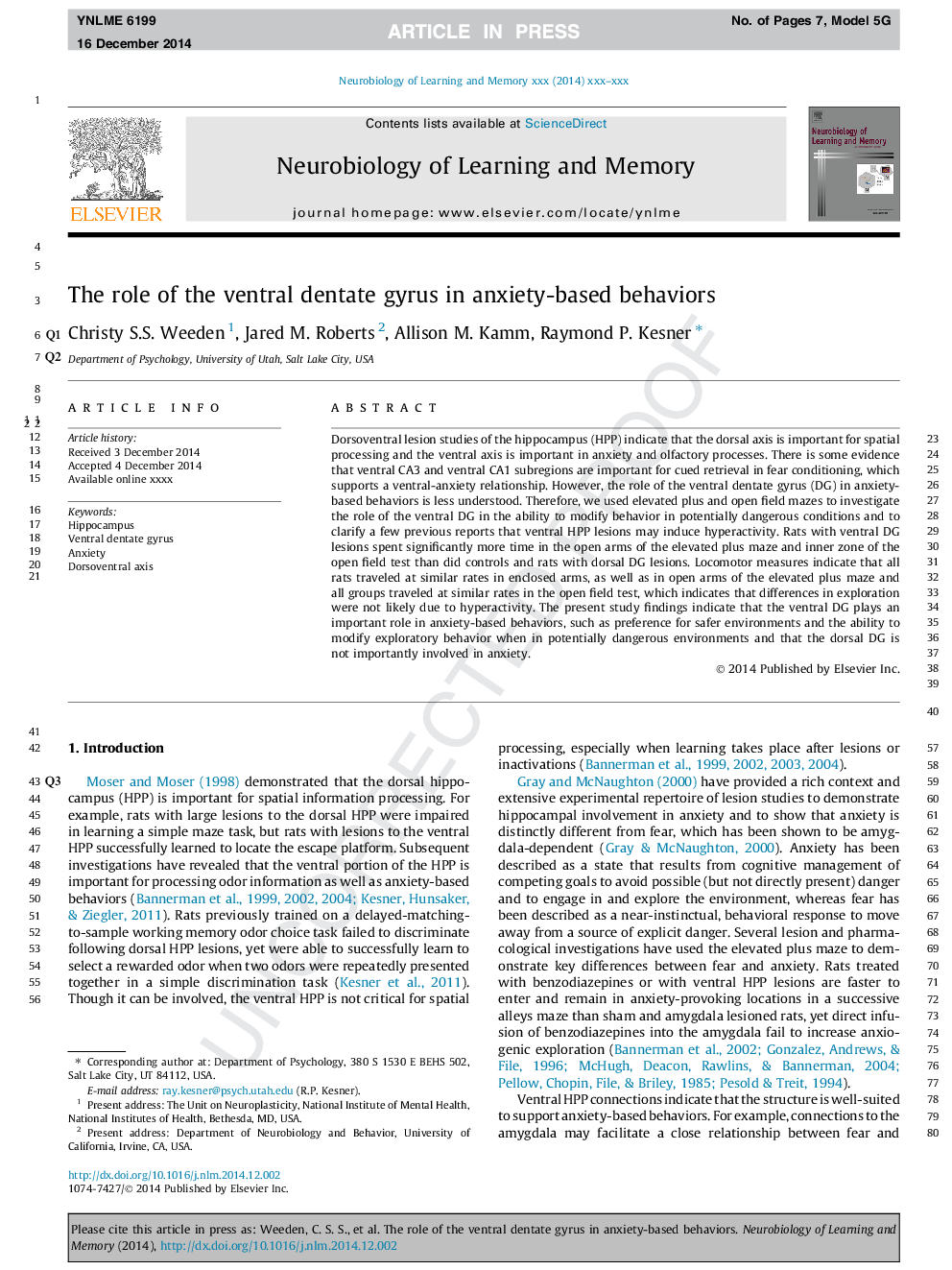| Article ID | Journal | Published Year | Pages | File Type |
|---|---|---|---|---|
| 7299707 | Neurobiology of Learning and Memory | 2015 | 7 Pages |
Abstract
Dorsoventral lesion studies of the hippocampus (HPP) indicate that the dorsal axis is important for spatial processing and the ventral axis is important in anxiety and olfactory processes. There is some evidence that ventral CA3 and ventral CA1 subregions are important for cued retrieval in fear conditioning, which supports a ventral-anxiety relationship. However, the role of the ventral dentate gyrus (DG) in anxiety-based behaviors is less understood. Therefore, we used elevated plus and open field mazes to investigate the role of the ventral DG in the ability to modify behavior in potentially dangerous conditions and to clarify a few previous reports that ventral HPP lesions may induce hyperactivity. Rats with ventral DG lesions spent significantly more time in the open arms of the elevated plus maze and inner zone of the open field test than did controls and rats with dorsal DG lesions. Locomotor measures indicate that all rats traveled at similar rates in enclosed arms, as well as in open arms of the elevated plus maze and all groups traveled at similar rates in the open field test, which indicates that differences in exploration were not likely due to hyperactivity. The present study findings indicate that the ventral DG plays an important role in anxiety-based behaviors, such as preference for safer environments and the ability to modify exploratory behavior when in potentially dangerous environments and that the dorsal DG is not importantly involved in anxiety.
Related Topics
Life Sciences
Neuroscience
Behavioral Neuroscience
Authors
Christy S.S. Weeden, Jared M. Roberts, Allison M. Kamm, Raymond P. Kesner,
